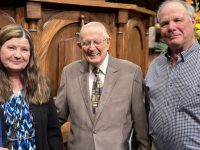I love learning more about World War II and the Holocaust, so I couldn’t wait to read Chasing Shadows by Lynn Austin. Throughout the novel, Austin portrayed courageous men and women who risked their lives to hide Jewish families. That tension between fear and faith is one of the book’s strongest themes.
When I first read the Prologue, I wondered why Austin didn’t make it the opening chapter. But on closer inspection, I appreciated her choice to begin in May 1945—an introduction rich with setting, the shadow people, and Lena’s family members, who are involved in the Dutch Resistance throughout the story.
Chapter one moves six years earlier, to 1939. There is a large cast of characters in this novel. Eloise—a fragile, bipolar woman whose mood swings and bursts of energy make her fascinating to follow. Yet the most compelling character for me was Eric, a police officer who somehow justified arresting his Jewish friends and neighbors to “keep the peace” and protect himself from harm. His moral struggle struck at the issue of Christ’s command to love our neighbors as ourselves—even when loving a Jewish person brings suffering or death.
One technique that helped me keep the list of characters organized was Austin’s decision to structure the book so each chapter centers on one or two main characters. This design made transitions easier and allowed me to “downshift,” savoring her vivid descriptions. Through her characters’ lenses, I saw the narrow streets of the Netherlands, pumped my legs as I pedaled across the countryside, and sensed the danger of German officers enforcing curfew.
If you enjoy historical fiction about the Holocaust, you will appreciate Chasing Shadows by Lynn Austin and her equally moving novel, If I Were You. Another exciting read and opportunity to learn more about the Holocaust is John Boyne’s All the Broken Places: A Novel, and The Hiding Place by Corrie Ten Boom.







